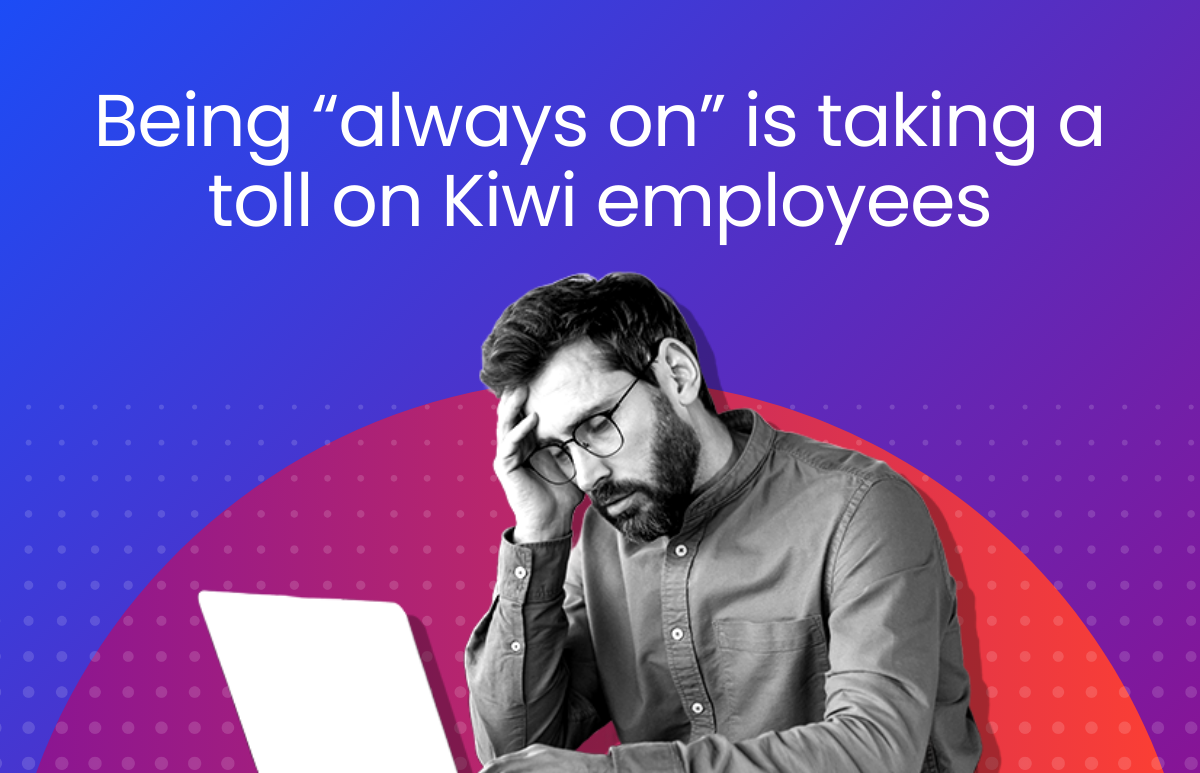Managing Workplace Stress and Fatigue: A Practical Guide for Employers

As the pace of work continues to accelerate, it’s not surprising that employees have been left feeling fatigued and burnt out. The uncertainty caused by the global pandemic, coupled with the high inflation and interest rates of the last few months, have taken their toll on many workers.
In 2023, workplace stress and fatigue will continue to be a top concern for employers because of the detrimental impact on productivity and the likelihood of increased absence rates. The good news is that there are steps that both employers and employees can take to manage workplace stress and fatigue, and in this article, we’re going to explore some practical strategies for doing just that.
What are the types of employee fatigue?
Physical fatigue: This type of fatigue is caused by prolonged physical activity or manual labour. It can lead to muscle aches, injuries, accidents, and a decrease in overall energy levels.
Mental fatigue: Typically caused by prolonged cognitive overload or mental effort, it can lead to feelings of exhaustion, lapses in concentration, memory problems, and an overall lack of motivation.
Emotional fatigue: This type of fatigue is caused by prolonged exposure to stress, tension, or emotional upset. It can lead to feelings of apathy, irritability, and a lack of enthusiasm.
Shift work fatigue: Caused by working a non-traditional schedule or rotating shifts which can disrupt a person’s circadian rhythm and lead to problems sleeping. This type of fatigue often results in physical exhaustion.
Travel fatigue: This type of fatigue is caused by the physical and mental demands of travelling, such as jet lag, lack of sleep, and changes in time zones and environment which can affect a person’s natural rhythms. Again, it’s likely to lead to physical exhaustion.
Causes of workplace stress and fatigue
There could be many factors that cause an employee to feel stressed and fatigued. As well as the causes highlighted above, there may be other situational factors that are contributing to the problem.
Bullying and harassment
It goes without saying but being bullied or harassed at work presents a significant cause of stress for an employee. The continued worry and anxiety that comes with feeling unsafe in their place of work can have a detrimental effect on their health, leading to emotional fatigue. It’s critical for organisations to take a zero tolerance approach to bullying and harassment in the workplace, that reporting processes are in place, and that HR is a trusted source of support.
Unmanageable workloads
Another common source of stress and fatigue, employees who feel unable to manage the amount of work on their plate will quickly become exhausted. While busy periods are inevitable in all jobs, if the workload is constantly unmanageable it can be difficult for employees to cope. It’s important for managers to regularly check-in with their direct reports to get a sense of their current workload and take action if employees are struggling. That could involve better prioritisation of tasks, redistributing work among the team, hiring extra staff or utilising contractors. If managers simply turn a blind eye, the health and wellbeing of their employees, not to mention the quality of their work, will begin to suffer.
Lack of autonomy or flexibility
Research has shown a link between the level of autonomy afforded to workers and their ability to cope with stress. One study from the University of Birmingham found that employees with higher levels of autonomy in their work experienced positive effects on their overall wellbeing. It makes sense that those who have more choice in how they tackle their workload or the flexibility to work in a way that best suits them find it easier to manage stress. On the opposite end of the spectrum, those who have little or no autonomy in how they work are more likely to feel trapped and disempowered, which only adds to their level of stress. It’s just one of the many arguments for embracing a flexible working culture that empowers employees to strike the right balance.
Strategies for managing workplace stress and fatigue
Of course, reducing stress and fatigue in the workplace is crucial for maintaining a healthy and productive workforce. There are actions both businesses and employees should consider, but in this article, we’re focusing on a top-down approach that starts with the employer. Here are some employer-focused strategies that can be effective for reducing stress and fatigue:
Promoting flexible schedules
As mentioned above, there is a proven link between flexibility and wellbeing. Employers can allow employees to have more control over their schedules by embracing a flexible working culture, which in turn can help to reduce stress and improve work-life balance. Flexibility doesn’t necessarily mean working from home – especially for industries where that isn’t an option. Flexibility can come in the form of altered working hours, part-time work or job sharing, shift-swapping, or being able to do admin work from home, for example.
Providing support and resources
Employers can provide resources such as Employee Assistance Program, access to counselling, or educational programs to help employees learn how to better manage stress and fatigue.
Wellbeing leave
Many organisations have introduced specific wellbeing or mental health days as a result of the pandemic. Offered on top of the statutory requirements for annual and sick leave, these days are a way for employees to engage in an activity that benefits their mental or physical health. Some businesses have even implemented business-wide shutdowns, forcing all employees to shut up shop for the day.
Fostering a culture of open communication
This is a crucial, yet often overlooked, strategy to improve wellbeing because stress and fatigue are often hidden by employees. If staff don’t feel comfortable to speak up when they’re struggling, the problem cannot be addressed or resolved. That’s why it is so important for organisations to foster an environment where employees feel comfortable discussing their stress and fatigue levels with their managers and HR.
Read more: The Three Types of Care Every Organisation Needs to Thrive
Leading by example
One of the best ways to create an open and supportive environment is to encourage managers to lead by example. If employees see their managers visibly stressed and fatigued, yet ignoring the root of the problem, they’re going to do the same. Encourage managers to role model the behaviours they want to see from their team, whether that is logging off for some much-needed rest and recovery, pushing back against an unmanageable workload, or taking a zero tolerance approach to bullying.
Understanding the root causes
To be able to address the root causes of stress and fatigue, employers first need to know what those are. That’s why regular pulse surveying is essential to pick-up on underlying issues and take proactive action to reduce the causes. Surveying doesn’t need to be a long and arduous process either. A quick, 10-question quarterly pulse check is enough for HR to monitor wellbeing levels among different teams, alerting them to signs of workplace stress and fatigue.
ELMO Survey allows users to take a quick pulse check of their workforce, either by creating their own survey or by using one of the many pre-built templates. The easy-to-use functionality makes it simple to visualise the results, compare data by key demographics, and share the results with stakeholders.
There’s no one answer to reducing employee stress and fatigue
It’s important to note that managing stress and fatigue is an ongoing process that requires commitment from both employers and employees. By taking an organisational, top-down approach, employers can strive to get the foundations right. After all, work itself should not be a cause of long-term stress and fatigue, especially if employers want a highly productive, sustainable and engaged workforce.
But remember, there’s no one, simple answer. Instead, focus on creating an environment that promotes a healthy work-life balance, empowers workers to seek support when they need it, and equips them with the tools to deal with periods of stress, whether in their working or personal lives.
To find out more about ELMO Survey and how it can help your organisation to uncover actionable insights, check out the product page here.
ELMO Software is a leading provider of integrated, cloud-based HR technology operating in Australia, New Zealand and the UK. With over 3,000 customers, ELMO helps users to save valuable time, money, and resources by streamlining HR processes within one easy-to-use platform.
Highly configurable, the solutions can be tailored to meet each organisation’s unique needs and processes. What’s more, supportive implementation services and dedicated Account Managers help our clients to get the most from their ELMO platform and drive a higher return on investment. Visit the ELMO website to find out more.
 HR Core
HR Core 










